

Home | E
February 6th | Manuao Opening | T.W.Ratana's Dream
Many Maori began moving to Ratana Pa, transforming this once quiet farm into a densely populated shantytown. Large marque, small tents and huts were being built. Electricity was installed and Ratana Pa became the setting of a religious village. Food such as bullocks, sheep, vegetables, seafood as well as fresh drinking water was being transported into Ratana to cater for the thousands. By November 1920, the pilgrimage of Maori to Ratana Pa was well established. Mr Ratana was able to inspire the Maori people with his faith healing miracles and deep religious belief in Christianity the inspiration of his divinely given healing powers. This practice convinced Maori that their old pagan ways in Tohungaism was a sin in the eyes of God. The Maori people were encouraged to stay away from those old practices and to worship the one true God of heaven and earth. Some Maori who were not convinced with Ratana’s Christian teachings began stepping back into their old practices in Tohungaism and Makutu. (Te Rongo Pai Hou A T.W.Ratana Mangai: 1940)

During the early period of 1920, there were four original large meetinghouses and a double cabled cooking and dinning facility they all served a purpose, each representing a significant cause. From the west to the east, their names were Te Aroha, Rangimarie, Whare Marama, Piki Te Kaha, and Kii Koopu.
: was used to feed the people and during the evenings it would be used for evening dances and fun raising events.
was used as a sleeping facility for visitors and utilised as the venue where young Maori were taught the skills of Taiaha, Patu, and Maori Martial arts practicing the good aspects of Maori Culture.
was used as a hospital with up to 30 to 40 beds in the facility. The Awhina (sisters of mercy) were qualified, as nurses became staff for the patients during the early 1920s.
was used for political purposes where discussions were tabled concerning the welfare for the Maori people and Morehu. Their representatives from Ratana would represent the people in Parliament. Tahupotiki Wiremu Ratana was the overseer of all works.
room was used as a sleeping facility before the original Manuao was built. Te Aroha was also used by the Reo (Band) for practice and rehearsals. This building was also used during the pre-Manuao times as a schoolroom for the children. Tahupotiki Wiremu Ratana passed away in the Te Aroha room on the 18th September 1939, at 10am Monday morning. (Akoranga Anaru 1997)
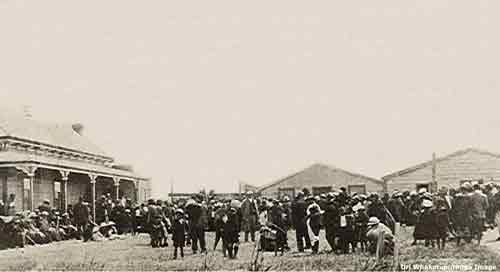
The Marae Atea at Ratana Pa is very different from any Marae around the New Zealand. It is the site designated for the welcome and farewell ceremony of the Ratana Movement and Church opened to every denomination on this planet. On most Marae the welcome is extended by Kai karanga on behalf of their Tupuna, Whare and the Whaikorero is given expressing the Genealogy of their ancestors through the people, family and Waka where as the Tikanga and Kawa of Ratana is totally to do with “Ihoa O Nga Mano”, God of the Multitude.
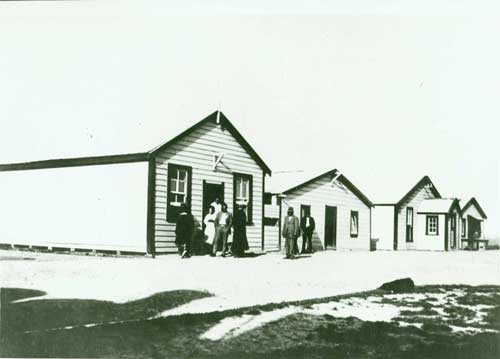
When entering Ratana Pa the normal Tikanga or Kawa observed by most visitors is they first give thanks to God in prayer inside the Temple for their safe journey. After thanks giving prayers the people would be marched on to the Marae by one of the Ratana Bands. On arriving at the threshold of the Marae a Kai karanga will sound, she will be representing the call of the Wairua Tapu to all people to gather on the sacred Marae of “Te Paa O Nga Ariki.” The speakers come from many parts of the country and are normally Pou o Te Haahi. In their welcoming speech they may mihi to the special buildings that surround the Marae and acknowledge the many Waka that brought our Tupuna here to Aotearoa. The speaker would validate the importance of Kotahitanga (Unity of all) under Jehovah of the Multitudes.
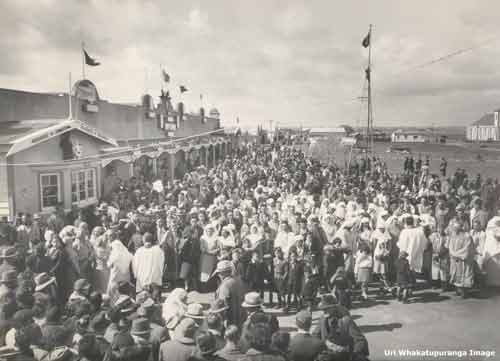
The first official building “Piki Te Ora” Church Mission house was opened on Christmas day 1920, (Essence of Health). This building was used as the early focal point of Ratana’s faith where the congregation would gather for healings and church services. This church mission house served a number of purposes, equivalent to the present model of health and education centre. Piki Te Ora continued to be utilised as a place on spiritual learning until the building of the first Manuao, erected and consecrated in 1938. During 1922, Piki Te Ora was transformed into a hospital, and near the end of December 1926, January 1927, with the completion of the new Temple, the Piki Te Ora became the official Ratana Church Office where business of the Ture Tangata was being conducted. Piki Te Ora was also referred to as the “Whare Paremata” (Parliament) during the 1920s. Later Piki Te Ora became a "Whare Wananga" College University" during the 1930s.
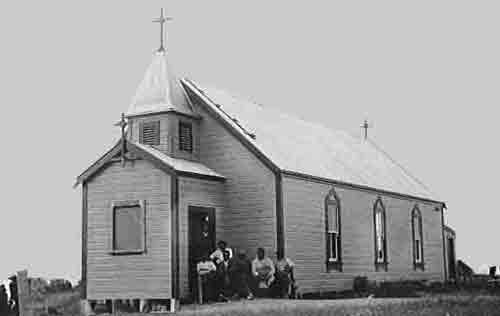
On the 8th October 1931, the Piki Te Ora building was closed ending its legacy as a building that became a place of worship where miracles took place, thus the name Piki Te Ora (Essence of Health) became an icon in Ratana history never to be forgotten. The Piki Te Ora was returned to the Methodist Church and all further official Ratana services were moved down to the Temple and conducted therein. All administrational duties are moved to the new premises on the Ratana Marae. Today on the original site of Piki Te Ora lays the Ratana burial grounds.
In 1924, Reweti Te Whena was responsible for the Theology School to developed the education theology required to train and up skill new Apostle’s, Awhina, Nga Reo Katoa (Bands), Takutai Moana Koea . (WM No.65 Te Tai I, Hune 20th 1925: pg3-4; WM No.4 Te Tai I, April 5th 1924: pg10)
(WM No.150 Te Tai I, February 5th 1927: pg5) He Kura I te Morehu
(WM No.103 Te Tai I, March 3rd 1926: pg1) Kawenata o te Haahi Ratana me Kawenata o te Kotahitanga Ratana
(WM No.71, Te Tai I, August 1st 1925: pg4) Tari Rehita
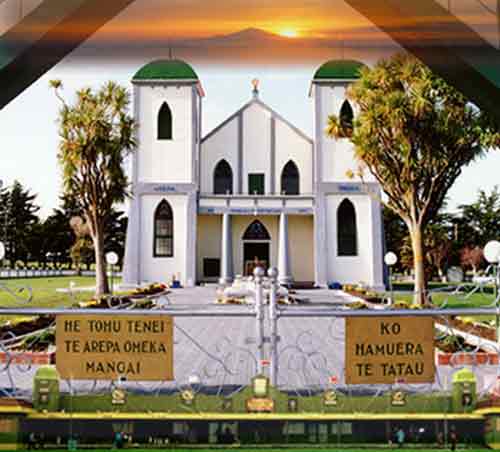
One of the main events for 1924, was the printing of the first copy of the ‘Whetu Marama o te Kotahitanga’ Chronicles of the Ratana Church March 15th 1924, was printed from the Whetu printing office at Ratana Pa, the first newspaper of the Ratana Movement, is a most important part of the structure within the realms of the Maramatanga. Although there were many other records and notes kept by various Secretaries over the years, copies of the Whetu Marama are the only records in existence of the work, sermons and teachings of Tahupotiki Wiremu Ratana Mangai, Piri Wiri Tua during his twenty year ministry. The first editor of the Whetu Marama O Te Kotahitanga was Ihaka Te Tai from Te Tai Tokerau (WM, Te Tai, 1924: pg3: WM June 1981, pg7)
Ratana own words to the Whetu staff in 1924:
“You are the voice of both Te Mangai and Piri Wiri Tua, go forth.”
In order to track the history of the Movement and Church and the Ratana Kotahitanga infrastructures and networks would require an extensive study of the covenants and petitions that were taken and signed by thousands of Maori people throughout Aotearoa between 1920 and 1939. The Kotahitanga was set-up to deal mainly with the physical works (Ture Tangata) among the Ratana Adherents. It was responsible for keeping records of births, deaths, and marriages of the Ratana Adherents throughout the land.
- First Chairman of Te Runanga Mr. Hema Te Ao
- First Secretary of Te Runanga Mr. Kehu Maraku
- First Premier (Pirimia) of Te Runanga Mr. Hare Tauna
- Komiti Takiwa and Komiti Whaiti setup
The Ture Tangata structure in the Pa also consisted of sports, cultural, educational and musical groups. The Maori cultural group and orchestra formed in the Pa accompanied Tahupotiki Wiremu Ratana and his Roopu (party) on the 1924 World Tour.
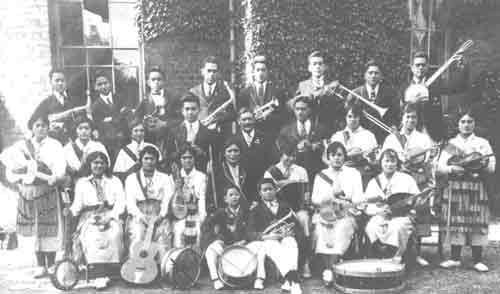
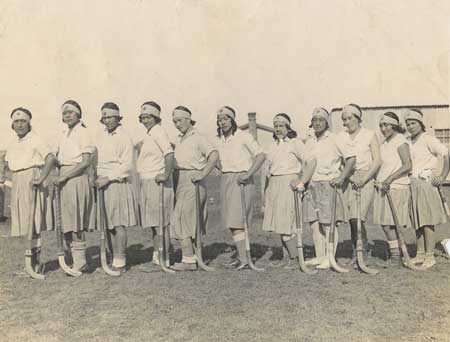
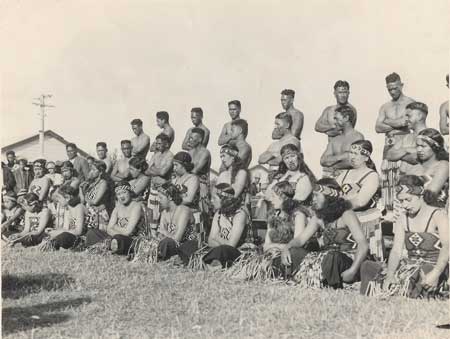
: By the time these committees were setup and functioning, Komiti Whaiti and Komiti Takiwa (Church Committees) were operating out in the Provinces. The foundation of the works of the Ture Tangata was thus setup. In its effects to improve the Social and Economical lot of the Maori people the Kotahitanga in its wisdom decided to form an investment society. This notice was published in the 1924 Whetu Marama
The old age Maori method of instructions was known as Oral Tradition, the first method used as a form of teaching. During those early years, Ratana Pa was a total Maori community, the teaching of the good aspects of Maoritanga the main subject of the school curriculum. The school was conducted in a small one-room building on the Marae in the vicinity where the 1938, Manuao stands today. Temporary staff was recruited from among the local residents and primitive form of education until a permanent school was built on the hill overlooking the North-Western boundary of the Pa. Work of the new school was done by voluntary labour and with materials supplied by Mr Ratana.
(Editor WM No. 1883, February-March, 1983: pp4-6; Editor WM Te Tai, 1924: pg4; Akoranga Anaru, 1997: pg21- pg34)
The Ratana School was opened and dedicated by Mr Ratana on the 24th March 1924. In his address, Mr Ratana as always preceded with a prayer. He prayed to God to grant his people the fulfilment of the Holy Spirit, and to bless the school and the children who would study in that environment. Ratana always acknowledged Jehovah first expounding his name to the highest level and depth of honour and glory. God held the keys to all knowledge and to all those things the people expected the school to provide such as knowledge, understanding, intelligence and wisdom and that the people should always acknowledge this fact by thanking and praising God and not them selves. After greeting the people in the usual manner, he congratulated those responsible for building the school and expressed his sincere hope and prayer that the work and activities of the school would at all times be blessed and that the children attending would be influenced to go out in the world and become useful citizens faithfully serving God and their fellow men. (WM Te Tai, 1924: pg4; Akoranga, Anaru; 1997: pg21-pg34)
(WM No. 1883; February-March, 1983: pp4-6)
“All knowledge” said Mr Ratana, “comes from God (Ihoa). Be not therefore like some people, who after having reached the pinnacle of learning flatly deny this, and instead claim it to be of their own efforts and design. In this progress over the centuries Man has attained a high plane of knowledge, so high in fact, that some people would have us believe that they them selves are God; Why they have but to press a button to get what they want. I therefore admonish you of the danger of permitting the devil/evil to enter into your thoughts or work in which you may be engaged.”
(WM Te Tai, 1924: pg4; Akoranga Anaru W, 1997: pg21- pg34)
Briefly, Mr. Ratana meant that the people should always use them selves and their education for the common good, that selfishness, greed, and false pride should be cast aside. Concluding his address Mr Ratana spoke these words.
In opening your school here today, you have shown that you have come to know another branch of the great tree, which has been planted among our people. The branch of learning, work well, and be prudent and presently one other branch from that same tree will exert its influence so that all our hopes and dreams for the future will come to fruition, God (Ihoa Onga Mano) will be pleased with your diligence and enterprise.” (WM Te Tai, 1924: pg4; Akoranga, Anaru, 1997: pg21- pg34)
Mere Rikiriki, Tikarina, Matangirei BuildingsMere Rikiriki was the aunt of Tahupotiki Wiremu Ratana. This woman assisted Wiremu during his early days and had foretold that the Wairua Tapu (Holy Spirit) would eventually guide her nephew to be the most prominent leader in Maoridom. Two buildings, the Tikarina and the Matangirei, were gifted to Ratana from his aunt Mere Rikiriki. They were moved from Parewanui to Ratana Pa in 1924. However, the Matangerei was destroyed by fire at Ratana Pa before it was due to opened. The Tikarina (Straight lines) was used as an administration office for many years and at times was used for alternative accommodation. The Tikarina is still used to today too house guests and visitors during the Ratana Celebrations.
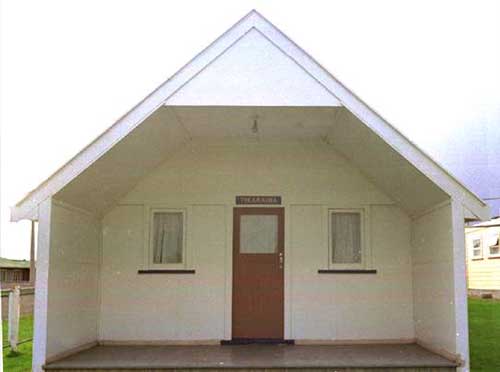
“O my People, hasten to me; I am a woman, and being so, I minister unto you as a woman would to her own children (i.e. love and peace). For beware! The time is near when a young man will rise in my place; when he comes there will be weeping and gnashing of teeth; when he comes the true and the false will never survive together, neither will righteous and the unrighteous, no doctrines that are of God and the doctrines of Man and the Devil”. (Akoranga, Anaru, 1997: pg10)
A part of the message of the prophetess was another great leader and prophet wound soon arise among the Maori people. On occasion she repeated the prophecy and later confirmed that the one she referred to was T.W.Ratana and she assured him that when the time was right he would receive signs, which would make his designation certain, which occurred in 1918. Ratana continued to visit his aunt for guidance at times of troubles. This would confirm Ratana and his two sons, Arepa and Omeka signifying the beginning and the end of Tahupotiki Wiremu Ratana’s work.
(Henderson, 1963: pg23; Sinclair, 2002: pg37) (Henderson, 1963: pg14; Elsmore B, 1989: pg335)
By 1925, Ratana started moving forward into the Ture Tangata aspects of his mission (Physical Works) one aspect was to form a church for Morehu but felt is was not the right time.
(WM Te Tai I, May 31st 1925; Akoranga Anaru, 1997: pg23)
New streets were being formed and named in Ratana Pa, street lights were being erected, although the electricity was provide by use of a generator installed by Ratana and his loyal followers.
(WM Te Tai I, June 13th 1925; Akoranga Anaru, 1997 pg23)
However, the Morehu who still retained their individual Tribal statues where upon their own areas were allocated to build their homes and meeting houses. The home and meeting had were installed with electricity, a bakery was built delivery up to 150 loafs of bread a day, two butcher stores and four general food stores had now been opened in Ratana Pa making the small community a viable little business.
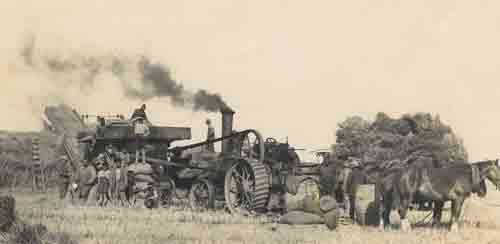
By the end of 1925, the population in Ratana swelled to 600, with hundreds of people still visiting Ratana daily thousands during the Hui festivals. There were many events happening keeping the Morehu entertained spectacular dance groups, poi groups, singing groups, kapa haka performances, topped off with a large screen showing moving pictures, the projector being provided by T.W.Ratana Mangai. T.W.Ratana Mangai gave an invitation to individuals to film the activities taking place in Ratana Pa, such as Poi and Haka. Some morehu were taught how to operate these machines and record their own history happening in the Pa. (WM Te Tai I June 20th 1925; Akoranga Anaru, 1997 pg23)

History of the Manuao goes back to 22nd February 1933, when T.W. Ratana related to the people who gathered on the Marae of a dream he had during his afternoon nap. This would set the scene for the construction of the Manuao that was inspired to him in his dream to build a stronghold for the people, a place of refuge for them to shelter from the floodwaters of this life. Ratana began building a ship on a hill which he named the “Manuao”. Although the Kii koopu part of the Manuao would open on the 6th February 1938, the completion of the Manuao would not be open until the 11th September 1938. Mr Ratana had dreamed of a boat on land yet this boat, liken to Noah's boat the Ark was built for Salvation. This is the English translation of Tahupotiki Wiremu Ratana's dream.
“After the rain that fell this afternoon, I lay down to rest, and in my sleep I dreamed I walked I saw a ship there, sitting on top of a hill all white in colour, with its two funnels so prominent. I thought to myself, what is that ship doing there? I felt that I wanted to go there, and at that same time I heard a roaring sound behind me. On turning around I saw a great flood rushing towards me and covering the land mass as it did so. Then I saw people running and seeking a place of refuge. I called and beckoned to them to hurry towards the island nearby.” “By now I had reached the safety of the ship by climbing a ladder to get aboard. I heard another roar, and on looking down I saw the floodwaters pounding against the side of the ship. When I looked up towards the bridge I saw “Te Whaea” standing there. I asked her, how they were, and she answered that all were well. Again I heard the roar of water, then I woke up, and at that time the rain was falling heavily.” (WM Tane M, 1938: pg3)
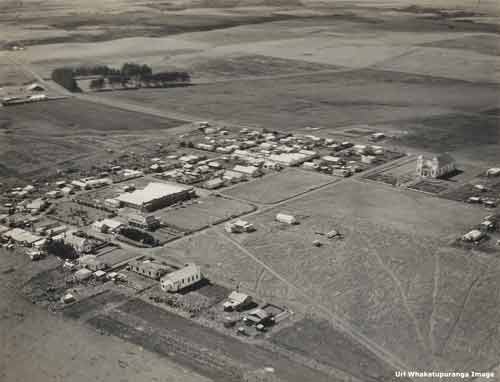
In Genesis: Chapter 7: Verses 1- 2-3-4-7-10-16
“(1) God said unto Noah, come thou and thy entire house into the Ark, for thee have i seen righteous before me in this generation. (2) Of every clean beast shalt take to thee by sevens, the male and his female; and of beasts that are not clean by two, the male and his female. (3) Of fowls also of the air by sevens, the male and the female; to keep alive upon the face of all the earth. (4) For yet seven days, and i will cause it to rain upon the earth forty days and forty nights; and every living substance that i have made will i destroy from the face of the earth.” (7) And Noah went in, and his son’s and his wife, and his son’s wife’s with him, into the ark, because of the waters of the flood. (10) and it cam to pass after seven days, tht the waters of the floodwere upon the earth (16 And they that went in, went in male and female of all flesh, as God had commanded him: and the Lord shut him in. (Editor WM Tane M, 1938; Bible Ch7-1-2-3-4-7-10-16
6th February 1938
The 6th February, is recognised for two reasons in the Ratana Movement and Ratana Church. The signing of the Tiriti O Waitangi and the opening of the Kii Koopu Cooking facility in the old Manuao.
The Treaty of Waitangi was a document whereby the Maori people through their chiefs, gave the Crown absolute right to govern, New Zealand. In return, the Crown made certain promises, such as Maori people would reserve the right to fish and hunt, to govern themselves in certain circumstances with equal rights with the Pakeha, and the Crown would in its power to protect those rights. The Government operating first from Australia, then later establishing its self in Aotearoa changed the way Maori lived introducing foreign laws and living styles outside the Maori protocol. In the early days, Maori people had their own laws, these systems were the original practices used by the people. This knowledge was based around their Kawa, Tikanga, and Kaupapa. The Treaty of Waitangi was officially signed and sealed by many of those Maori chiefs who sign the Tiriti using their own blood, or using “Moko” (tattoo mark). Hundreds of lives were lost in the fighting due to the land wars. Thousands of acres were lost or taken as payment or punishment for their rebellion against the Crown. The story of the Tiriti and how this affected the Maori people is a tale too long to tell here. There are many aspects concerning the Tiriti O Waitangi that will come up for discussion, but first of all, let us look at two important points that have caused great disappointment and anger among Maori people, the facts about the Tiriti O Waitangi.
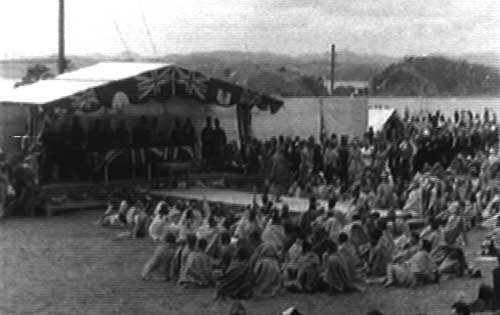
By 1938, Ratana unhappy with the NZ Government, knew they had not honored his Tiriti petition to adopt it into statue law. Ratana believed that his petition was never honored by any of the governments that were in power during the time of his Nga Koata. His petition was taken into the House of representatives in 1932, by Ratana Independent candidate Eruera Tihema Tirikatene. His Tiriti petition laid in Parliament in the clerk’s house in for fourteen years and has never been presented or viewed by the New Zealand public. The Treaty of Waitangi has had a modifying influence on offical dealings with Maori people and more generally the New Zealand public attitudes, compared to the European of the 1800s. This had a determination to dominate with colonial domination towards many indigenous races which leaves the gap between Maori and European expectations concerning the Tiriti O Waitangi still remains unbridge to this present day. (Orange C. Pg5: 1987)
The Kii Koopu area was opened on the 6th of February 1938. The Morehu were led by the Reo (Band). These words were spoken by T.W.Ratana and recorded by the editor of the Whetu Marama.
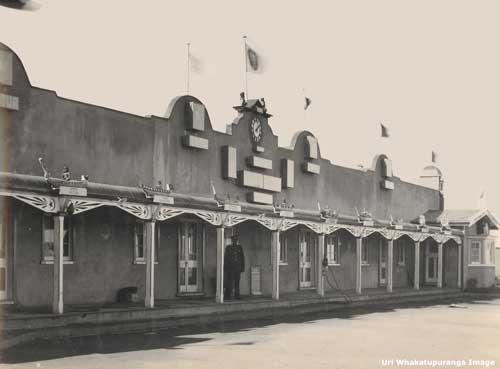
“E te Matua, Tama, Wairua Tapu Me Nga Anahera Pono, tatu atu kia korua e Te Arepa, Te Omeka me o Korua teina” "Your family of Morehu have assembled here in this part of the Manuao, in faith, hope and love, to offer their praises to You, Jehovah, for your giving and bestowing upon them, and the workers building this Manuao, the spirit of goodness and truth. We the Morehu thank you for what has been accomplished at this time, and ask that by your will and power, that the remainder of this building be completed, a building in which your work and laws Ture Wairua and Ture Tangata will be administered and preserved on this earth.”
“Grant the power of your Holy Spirit will always abide in this Manuao. This part of the building is named “Kii Koopu”, here; both the Body and the Spirit shall be filled and satisfied. This part of the building may be termed as the “New Born Child” of this age. Let the newborn child be fed so that the body will grow and gain strength. We pray, there fore that you Jehovah, will provide the Spirit to sustain this newborn child.” “Yours Jehovah is the strength and the power everlasting, which we ask be instilled into this Manuao so that it will serve as a refuge for your Morehu in the difficult times ahead. “A Man of War” (Manuao) is built for war among people, but this Manuao we are building is not meant for that kind of war.This Manuao is designed to serve as a shelter and stronghold in which we may study your will and your way “Jehovah”, in order that we the Morehu may gain strength and wisdom to face our adversaries in a “Battle of the Spirit”, where we shall be your hands and your feet in a battle, you started, and only you can end.”
“Oh Jehovah, your house is assembled, your Manuao stands here today, imbue it with your Spirit and Power and finally let not your Spirit be hidden from the little children gathered here with us, but grant that they grow up in strength and in knowledge of your will and your works on this earth.” (WM Tane: 1938, pg6) (Akoranga Anaru 1997: pg20)
This was indeed a big day for Ratana Pa and the Morehu, for as well as the opening of the Manuao, the Prime Minister of New Zealand, and several guest were among the visitors was expected to visit Ratana for the opening of the facility. In talking to the people about the Manuao T.W.Ratana said no doubt people were wondering that since this was a Man-of-War, where are its Guns? Ratana replied that since the Head of Government is expected here today, it might be the right time for the Manuao’s guns to fire. As Mr Ratana explains; some of you are asking why are those miniature canoes and boats mounted on the front of the Manuao?
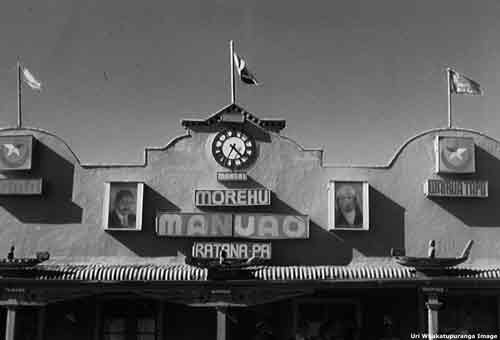
“The answer is this; those are “life boats” of your Manuao. Should your Manuao overturn, you will know that your Waka (Lifeboat) is there for you to turn to. You see, the function of a lifeboat is to save people. There they are, Aotea, Tainui, Kurahaupo, Tokomaru, Takitimu, Te Arawa, and Mataatua”
Ratana continued his speech by saying: “I have greeted many of you in Maori, and I find that you do not understand and answer what? Therefore, I say it is fitting that Captain Cook’s waka is on the Manuao too, for it appears that some of you belong to it rather than to the waka. Ships only have one Captain, but your Manuao has two. There is Piri Wiri Tua manning one wheel, and the Mangai, manning another. Yes, two Captains, each smoking his pipe and waving goodbye to those who missed the boat.”

During evening service T.W.Ratana began to teach his Morehu about the significance of the Manuao repeating his very sermon he spoke that afternoon. Many of his sermons he delivered to the people were repetitious to enable them to understand what he was actually saying. Ratana said that the Manuao and its meaning revolves around the seven Canoes and the two sailing ships, Captain Cook’s “Endeavour”, and Abel Tasman’s “Heemskerk.” The Manuao has great significance spiritually and physically in this Maramatanga.
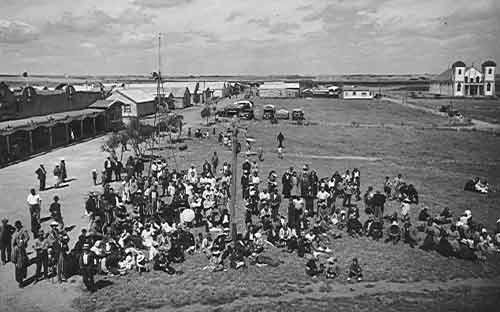
T.W.Ratana called it his Koha Mutunga, his last and parting gift to the Maori people. He told the people this is your “Last Chance.” T.W.Ratana explained that the Morehu, although coming from different tribes and races, we are “One People”, and that we should not allow divisions in any shape or form spoil this. The Manuao teaches us many beautiful things we should strive and follow and exemplify in our daily walk of life, both spiritually and physically.”
(Editor WM Tane, pp2-4: 1938; Akoranga, Anaru; pg27: 1997)
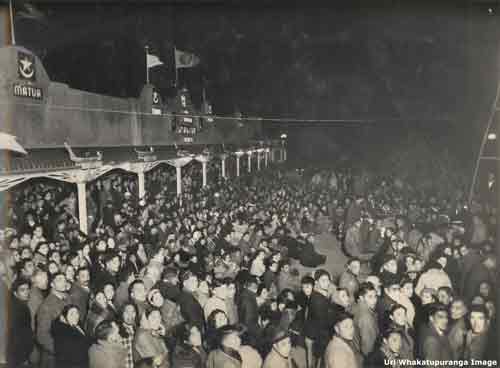
The 11th September was his last and parting gift (Koha Mutunga) the Manuao building to the Morehu. After T.W.Ratana passed away, for a long time the Manuao was under the care of the Komiti Matua, Ture Wairua, Ture Tangata, and the Komiti Marae. The former was a committee comprised of (Nga Koata) the members of Parliament which were charged with the administration of the finances of the Temple and Manuao, while the Komiti Marae saw to the day-to-day, or minor maintenance work and general care of the Manuao. (Akoranga Anaru: 1997: pg26)
The 18th September 1939, is the passing away of T.W.Ratana the man? Above all things he was a servant of God who was empowered with the anointing by the Holy Spirit. He was a great humanitarian, and as such made a tremendous contribution to the welfare and good for Maori, Pakeha, and many other people from different cultures throughout the world to empower them with health, enlightenment, strength and divine peace on both a spiritual and physical level. There were about 4000 Maori that were housed at Ratana Pa for T.W.Ratana's funeral which took place at 2.30pm on Sunday. The funeral was conducted by the Apostles of the Ratana Church .

The acting minister of Native affairs, the Hon.F Langaston, Sir Apirana Ngata, and other members of Parliament would be present . There were Hundreds of telegrams and letters of sympathy that poured into the Ratana Post Office. The whakamatautauranga (testing times) endured by Ratana immediately after the 8th November 1918, the torment, hard work, worry and sacrifices endured during his ministry, culminating in his death on the 18th September 1939. The 11th September was his last and parting gift (Koha Mutunga) the Manuao building to the Morehu. (Akoranga, Anaru; pg26: 1997)
King Tawhiao Prophesy: During the 1840s Tawhiao spoke these words:
“Kia tupato ki te te kau ma waru o nga ra, ko Hepetema te Marama, tau Ariki te Tau, he tau tuku whakahere kia Ihoa.”
“Beware of the 18th day, September will be the month; a year when you will be reminded of a first born of one high born; a year, of sacrifice to Jehovah.”
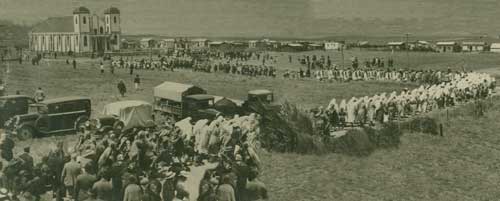
This prophecy of Tawhiao provides the key to the real significance of the 18th September. It reminds us of the great sacrifice made during Jesus Christ life time, culminating in the Crucification at Calvary, the hurt and sacrifices suffered and made by the Apostles and the Prophets of the old Testament. The whakamatautauranga (testing times) endured by Ratana immediately after the 8th November 1918, the torment, hard work, worry and sacrifices endured during his ministry, culminating in his death on the 18th September 1939.
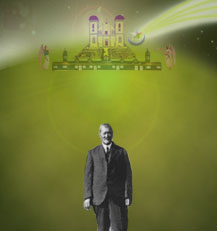
After T.W.Ratana passed away, for a long time the Manuao was under the care of the Komiti Matua, Ture Wairua, Ture Tangata, and the Komiti Marae. The former was a committee comprised of (Nga Koata) the members of Parliament which were charged with the administration of the finances of the Temple and Manuao, while the Komiti Marae saw to the day-to-day, or minor maintenance work and general care of the Manuao.
In 1940, the son of the late T.W.Ratana, Tokouru Haami Ratana, become President of the Ratana Church. His associates Paraire Paikea, Iriaka, Eruera Tirikatene, and Tiaki Omana had great influence in caucus. Housing and general social economics with health standards improved to help Maori society adapt to the new modern life style. Ratana Pa was the example to Maori settlements. Ratana Pa became an example to many Maori communities throughout Aotearoa.
Site Still Under Construction
|
|
|
|